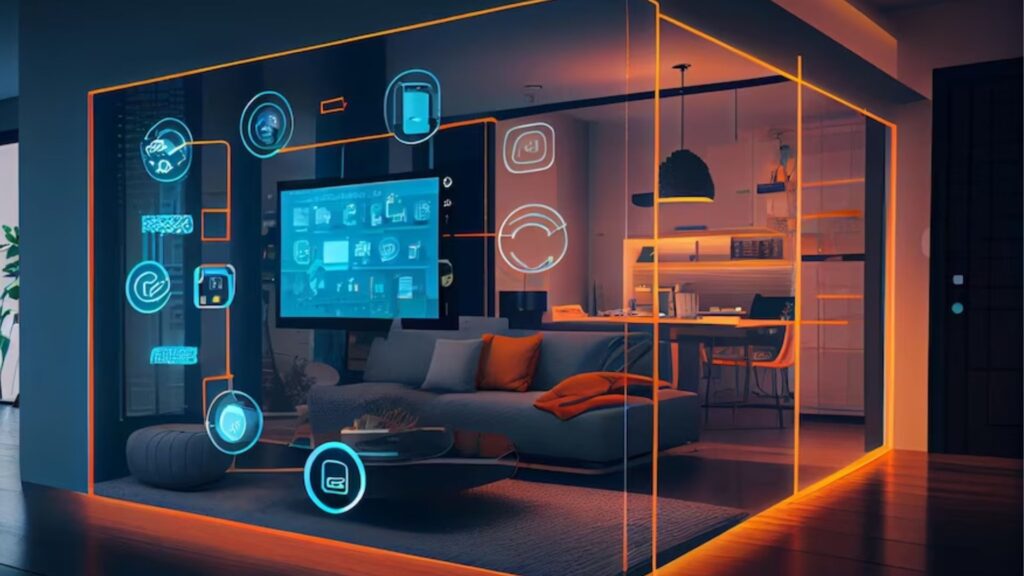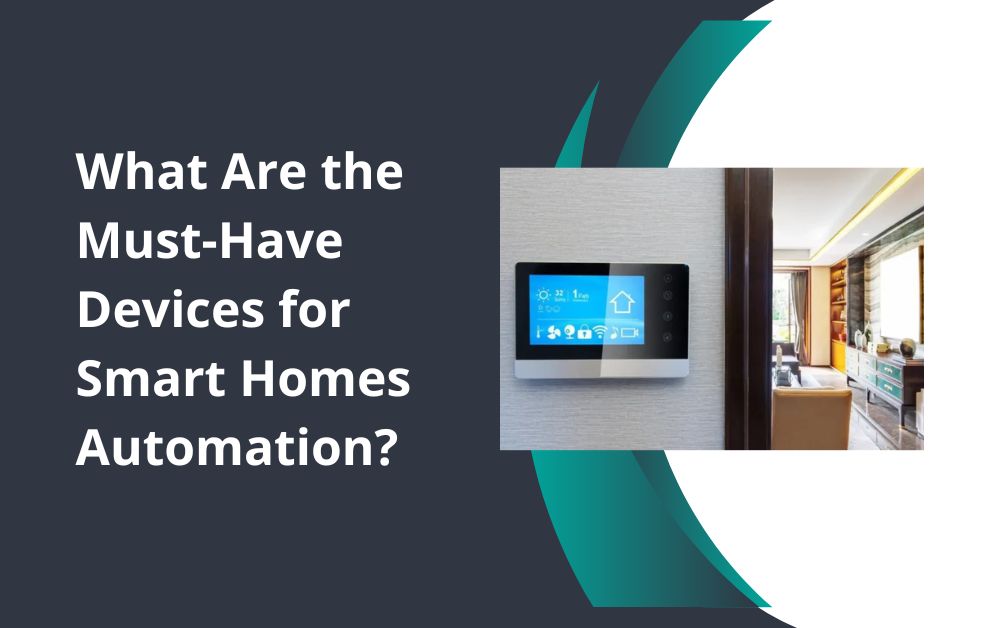smart home automation is no longer a luxury—it’s becoming a necessity for many households. By incorporating smart devices into your home, you can enhance convenience, security, and energy efficiency, making your day-to-day life easier and more enjoyable. But with so many smart devices on the market, it can be overwhelming to figure out which ones are essential. In this blog post, we’ll break down the must-have devices for Smart home automation, helping you create a more connected, efficient, and comfortable living environment.
Understanding Smart Home Automation
What Is Smart Home Automation?
Before we dive into the must-have devices, let’s first understand what smart home automation is. In simple terms, smart home automation refers to the use of technology to control various functions and devices in your home automatically or remotely. This can include anything from turning on lights with a voice command to adjusting the thermostat from your smartphone. The goal is to create a home environment that is more convenient, energy-efficient, and secure.
Must-Have Smart Home Devices
Essential Devices for Every Smart Home
Now that we have a basic understanding of what smart home automation is, let’s explore the must-have devices that can truly transform your home.
1. Smart Thermostat
Controlling Your Home’s Temperature with Ease
A smart thermostat is one of the most essential devices for any smart home. Unlike traditional thermostats, a smart thermostat allows you to control your home’s temperature remotely through a smartphone app. This means you can adjust the heating or cooling even when you’re not at home, ensuring your house is always at the perfect temperature when you arrive.
Many smart thermostats also learn your schedule and preferences over time, automatically adjusting the temperature to save energy and reduce your utility bills. For example, it can lower the temperature when you’re at work and warm up the house just before you get home, providing comfort without wasting energy.
2. Smart Lighting
Creating the Perfect Ambiance with a Tap
Smart lighting is another must-have for any smart home. With smart light bulbs and switches, you can control the lighting in your home remotely or set up schedules for when lights should turn on or off. You can even create custom lighting scenes to suit different activities, such as reading, watching movies, or hosting a dinner party.
One of the biggest advantages of smart lighting is its energy efficiency. You can dim lights or turn them off automatically when they’re not needed, reducing energy consumption and lowering your electricity bill. Additionally, many smart lights can be controlled by voice commands, adding an extra layer of convenience.
3. Smart Security System
Protecting Your Home with Advanced Technology
Home security is a top priority for most homeowners, and a smart security system can provide peace of mind by keeping your property safe. A smart security system typically includes a combination of devices such as smart cameras, doorbell cameras, motion sensors, and smart locks.
With smart cameras, you can monitor your home in real-time from your smartphone, no matter where you are. Doorbell cameras allow you to see and communicate with visitors at your front door, even if you’re not home. Smart locks enable you to lock or unlock your doors remotely, and you can even grant access to guests or service providers without needing to be there in person.
These devices work together to create a comprehensive security system that not only deters potential intruders but also keeps you informed about what’s happening around your home at all times.
4. Smart Speakers and Voice Assistants
Controlling Your Smart Home with Your Voice
Smart speakers, such as Amazon Echo and Google Nest, are the hub of many smart homes. These devices come with built-in voice assistants like Alexa or Google Assistant, allowing you to control various smart devices in your home with simple voice commands.
For example, you can ask your smart speaker to play music, set reminders, control your lights, adjust the thermostat, or even search the internet for information—all without lifting a finger. Smart speakers can also be integrated with other smart home devices, creating a seamless and convenient user experience.
5. Smart Plugs
Turning Any Device into a Smart Device
Smart plugs are an affordable and easy way to make your home smarter. These devices plug into your existing electrical outlets, allowing you to control whatever is plugged into them remotely. For instance, you can use a smart plug to turn on a lamp, coffee maker, or fan from your smartphone.
Smart plugs also allow you to set schedules, so your devices can turn on or off automatically at certain times. This is particularly useful for things like holiday lights or appliances that you want to power down when not in use to save energy.
6. Smart Appliances
Enhancing Daily Chores with Modern Technology
Smart appliances are a significant upgrade for any home, offering convenience and efficiency. These include smart refrigerators, washing machines, ovens, and more. For example, a smart refrigerator can help you keep track of your grocery inventory, suggest recipes based on what’s inside, and even order groceries for you.
Smart washing machines can be controlled remotely, allowing you to start a wash cycle from your phone, so your clothes are ready just when you need them. Similarly, smart ovens can be preheated remotely, saving you time in the kitchen. These appliances are designed to make daily chores easier and more efficient, giving you more time to focus on other important tasks.
7. Smart Home Hub
Connecting All Your Devices for Seamless Automation
A smart home hub is a device that connects all your smart devices, allowing them to work together seamlessly. While many smart devices can operate independently, a hub brings them together, enabling you to control everything from one central app or device.
For example, you can create automation routines where your lights, thermostat, and security system work in sync. In the morning, your hub can trigger a routine that gradually brightens your bedroom lights, turns up the heat, and starts your coffee maker—all without you having to do anything.
Popular smart home hubs include Samsung SmartThings, Amazon Echo, and Apple HomeKit. Choosing the right hub depends on the smart devices you have and the ecosystem you’re most comfortable with.
The Benefits of Smart Home Automation
Why Investing in Smart Devices Is Worth It
Investing in smart home devices offers numerous benefits beyond just the “cool” factor. Here’s why smart home automation is worth considering:
1. Convenience
Simplifying Daily Life
Smart home devices are designed to make your life easier. Whether it’s adjusting the thermostat, controlling lights, or locking doors, these tasks can be done remotely or automatically, giving you more time to focus on the things that matter most.

2. Energy Efficiency
Saving Money and Reducing Your Carbon Footprint
Smart devices can help you save energy by automating and optimizing your home’s energy use. This not only lowers your utility bills but also reduces your overall environmental impact, making your home more eco-friendly.
3. Enhanced Security
Keeping Your Home and Family Safe
With smart security devices, you can monitor your home in real-time, receive alerts about any unusual activity, and control access to your property, even when you’re not there. This adds an extra layer of security and peace of mind.
4. Increased Home Value
Making Your Property More Attractive to Buyers
Smart home automation can increase the value of your property. Many homebuyers are looking for modern, connected homes, and having smart devices installed can make your home more appealing on the market.
Conclusion
Start Building Your Smart Home Today
Smart home automation offers a wide range of benefits, from convenience and security to energy savings and increased home value. By investing in the must-have devices we’ve discussed—such as smart thermostats, lighting, security systems, speakers, plugs, appliances, and a home hub—you can transform your house into a smart home that adapts to your needs and makes everyday living easier.
Note:- To read more articles visit on ranktheblog.
